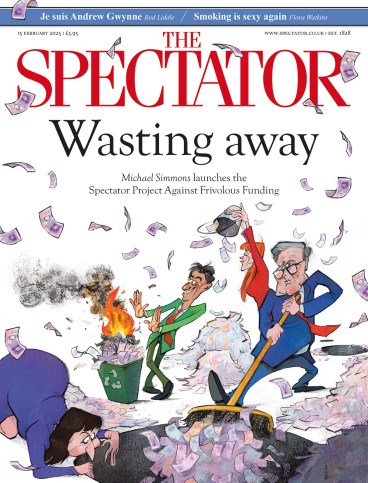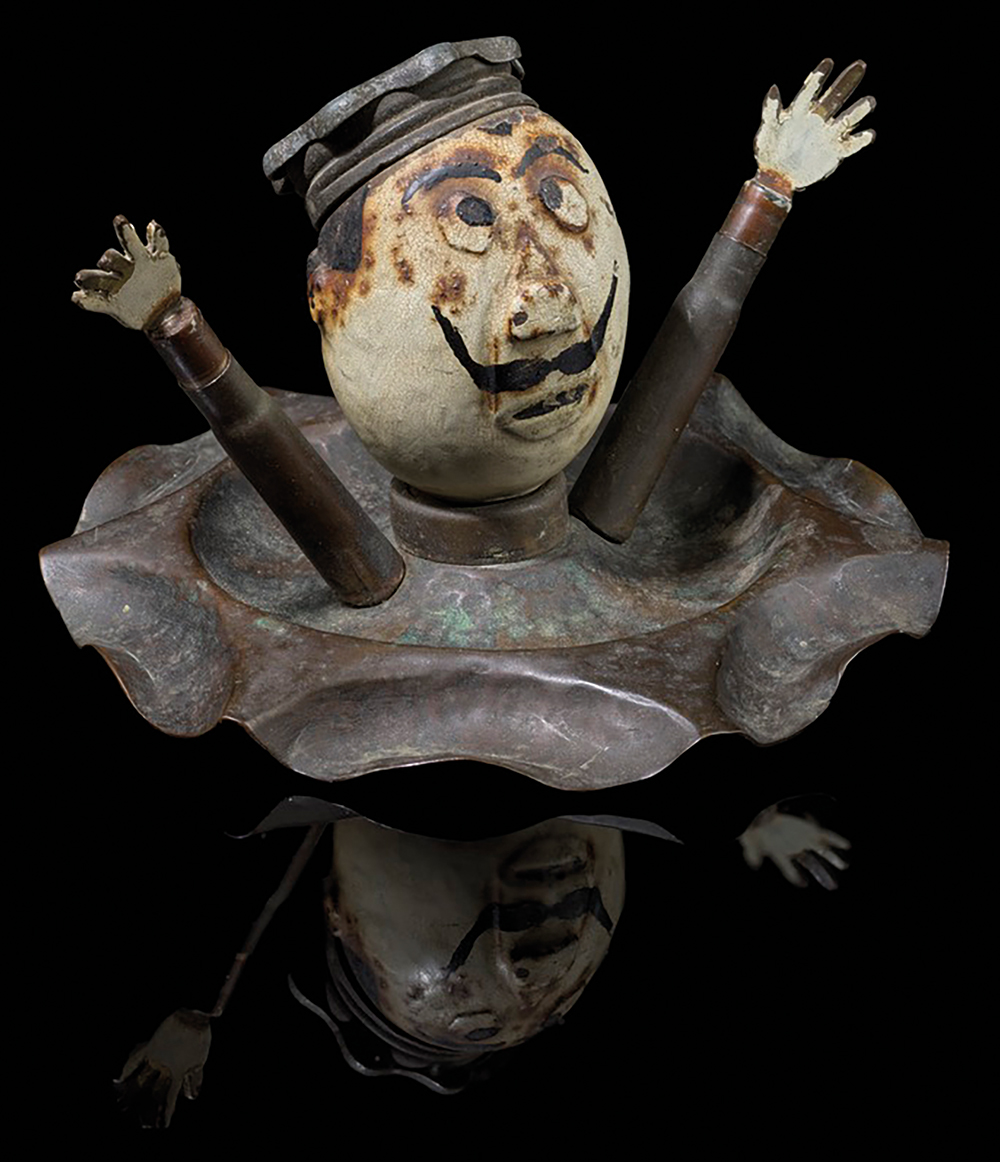
Nina Power has narrated this article for you to listen to.
On his deathbed, the Austrian writer Karl Kraus remarked of the Japanese attack on Manchuria: ‘None of this would have happened if people had only been more strict about the use of the comma.’ The implication being that by channelling rage into the ordering of small things, we might stay away from violence on a colossal scale. Unable to restrict ourselves to matters of punctuation, alas, humanity is often at war: with itself, and others, however hallucinatory.
Two current exhibitions come at rage from very different starting points. War and the Mind demonstrates the devastating psychological impact of war on those who fight it and those who have no choice but to suffer it. To this end, it encompasses everything from the physical and mental impact of fighting – ‘shell shock’, now more commonly described as post-traumatic stress disorder – to the psychological war for hearts and minds and the creation of an othered enemy who must be destroyed at all costs.
Along the way we encounter Lady Baden Powell cautioning young people in a letter in 1934 not to become ‘war minded’; Freud describing humanity’s ‘instinctive craving’ for violence; and Winnie-the-Pooh author, A.A. Milne, a dedicated pacifist, nevertheless changing his mind in the face of Hitler’s aggression. Of the 150 or so artefacts on display some are familiar – recruitment and anti-war posters particularly so – but others are more striking: a soldier’s dog-tags, a comforting reminder that one’s remains will hopefully be identifiable; an ashtray fashioned into the shape of a sinking combatant made of world-war-one shell cases, an example of ‘trench art’.
It becomes clear just how difficult it is to convince random civilians – no matter how enthusiastically they want to defend their country – to sustain hatred for any long period of time. Little bribes play a role: beautiful first world war packages of tobacco from Princess Mary: ‘very soothing, a cigarette’ recalls one private. Humour becomes crucial to surviving the constant threat of death: ‘Suicide Corner’ reads one trench sign, indicating a dangerous spot. Unused equipment – such as the unopened gloves of a weapons inspector in Iraq in 2002 – also provokes reflection. One archive video shows soldiers from the 41 Royal Marine Commando being experimented upon with LSD. After a short while, the exercise is called off, not least because one man has climbed a tree to feed the birds and the commander has collapsed into a heap of laughter.
But what of today’s peacetime soldiers, fighting battles against great abstractions such as capitalism, racism and climate change? Artworks, statues and heritage sites have suffered a spate of iconoclastic attacks in recent years. While the connection between throwing soup at a Van Gogh and fossil fuels is not perhaps obvious, groups such as Just Stop Oil have managed to generate several media spectacles and bag a couple of jail sentences from such activity.
In Safety Curtain Alex Margo Arden latches on to the targeted artefacts and their targeting. The show offers nine replicas of various paintings that were attacked by climate groups between 2022 and 2024, with the wounds of each assault on full display: these include Monet’s ‘Spring’, Van Gogh’s ‘Sunflowers’, Velazquez’s Rokeby Venus and three Mona Lisas with different cream-cake smears. The Venus was famously slashed in 1914 by suffragette Mary Richardson (‘I care more for justice than I do for art,’ she said at her trial), and then attacked with hammers by Just Stop Oil in 2023, leaving little bullet-like holes in the glass.
Thus the work and its ‘symbolic damage’, painted in great detail by Arden, are put on the same plane, and the activist and artist find themselves on an equal footing.
A politicisation of production is the theme of the show. In ‘Backstage Campaign’ we’re greeted with the sight of the handling crates of the Royal Academy of Arts. The question being posed is something like: ‘What about all those people and processes that work to make the art that we see?’ – with iconoclastic protestors playing the role of the hyperactive critic, perhaps.
The art here is the visual equivalent of Kraus’s comma: a channelling of rage into the smaller things of life. In a sense we should be relieved. But the lamentations of today’s protestors are put in stark contrast by the reality of war. If we forget how far the mind and body can be made to suffer, we perhaps imagine our pain is greater than it is. And we mistake which battles are worth fighting for.








Comments